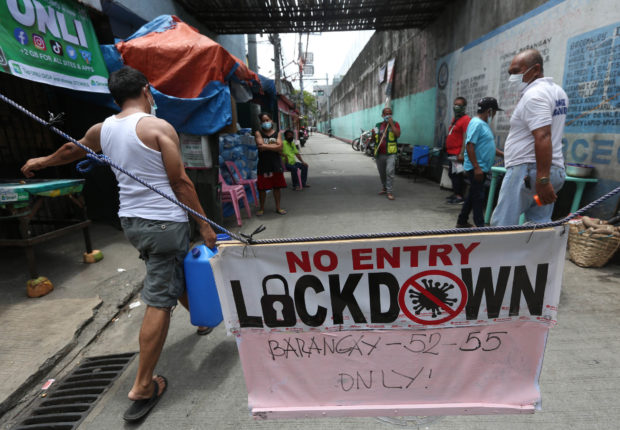
PRECAUTION Barriers have been set up in several villages in Pasay City to prohibit nonresidents from going in and out of these communities as Metro Manila undergoes another round of lockdown to contain the spread of COVID-19. INQUIRER file photo / MARIANNE BERMUDEZ
MANILA, Philippines — The government’s pandemic policy-making body will no longer take into account the COVID-19 two-week growth rate in determining the alert level and risk classification of an area, Malacañang said Tuesday.
This as the Inter-Agency Task Force for the Management of Emerging Infectious Diseases approved the recommendations of the sub-Technical Working Group for Data Analytics the new matrices to be used for the alert level system, acting presidential spokesman Martin Andanar said in a statement.
The new matrices removed the COVID-19 two-week growth rate in determining case risk classification. It will now be based on average daily attack rates and its current thresholds.
Meanwhile, the total hospital bed utilization rate and its current thresholds will be retained as the main metric for health system capacity, Andanar said.
With the new matrices, the assignment of alert levels will be based on the revised cross tabulation of total beds utilization rate and average daily attack rate, Andanar said.
The previous criteria for the alert level system considered the two-week growth rate, the average daily attack rate, and the hospital utilization rate in determining the case risk classification of an area.
RELATED STORY:
EXPLAINER: The Philippines’ COVID-19 alert level system


